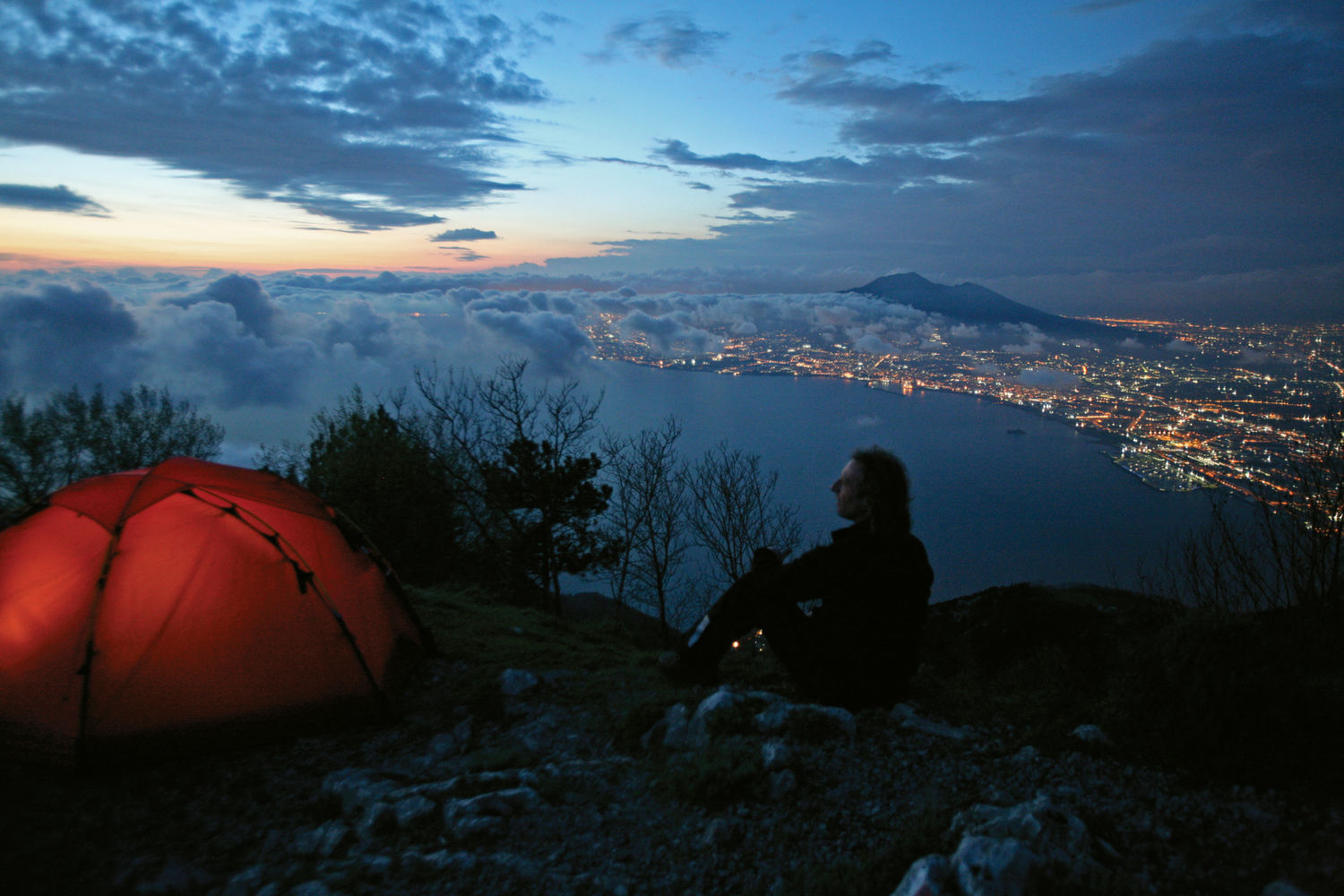Italy: Fire and Ice

Italy has many well-known sights, from mountain ranges, volcanoes, valleys, and towers to magnificent coastlines overlooking choppy seas. Still, a journey into the country’s deep unknown southern region comes along with surprises.
Riding Italy’s Backbone
The pass sign indicates “Vado di Sole.” This means something like “The way to the sun.” I’m standing on a cleared road, and everything to the left and right is covered in five inches of fresh snow from the night. Behind the pass, the view opens onto a high plain that reminds me of Tibet. This is not southern Italy as I expected. Traveling 1,500 miles from Germany at the end of April, you count on a much warmer climate compared to central Europe. My Ducati Hyperstrada is even packed with swimming gear. Pure miscalculation.

Let’s go back. The Italian journey starts in Bologna, a city famous for its architecture and for red motorcycles. Bologna is the hometown of Ducati. After a visit to the factory halls to watch how this piece of high-end technology is assembled, I’m on my own. All of Italy is at my disposal. Bologna is located in the fertile and culturally rich plains of the river Po, but just south of it are the Apennine Mountains. Like a backbone, they stretch from here all the way to the southern end of the country. They will become my way.
Seaside Vistas
First I have to make a decision. On the western side of the range, the famous lands of Tuscany lure with its splendor. On the eastern side, toward the Adriatic Sea, the region of the Marche promises mountains and less traveled routes. I opt for the latter and am rewarded immediately. The cliffs start to rise like monuments out of the green landscape. On one of them an entire country was built: San Marino.

A little farther, a small village, San Leo, sits even more spectacularly on such an outcrop. It is erected like a fortress on top of vertical rock walls. Invaders in the past must have given up in despair just from looking at it. The best thing about San Leo: I can get there by bike. A steep road carved out of the rock leads through a gate. It is narrow enough that tourist busses don’t stand a chance. Today, San Leo can defend invaders successfully, at least the ones of mass tourism from the nearby Adriatic Coast.
The next architectural pearl of this area is Urbino. Federico II da Montefeltro, the head of the family that ruled the area for a long time, wanted to build the perfect Renaissance city. He came very close. Like the immaculate Italian architecture, the town spreads exquisitely over a hill. I just need to follow the sign “Punto Panoramico,” a promise that comes true.

